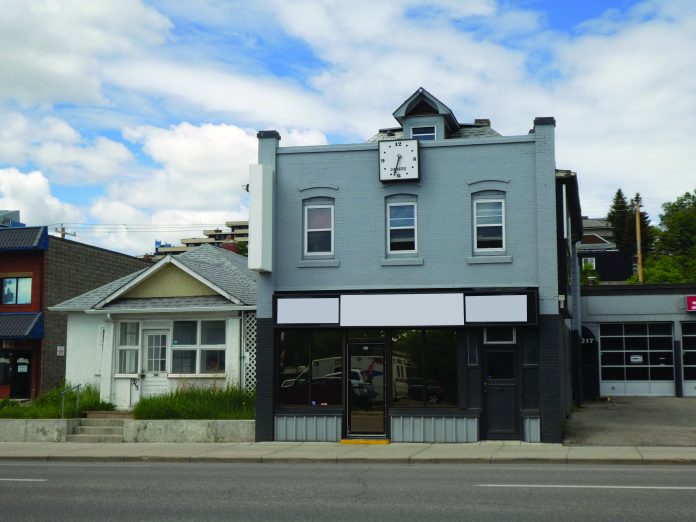by Deb Lee, Heritage Committee
Fourth Street, known as the ‘Trail to Edmonton,’ was a bustling thoroughfare in early days, especially after 1910. The streetcar crossed the bridge from the main part of Calgary, transporting the blue-collar workers to and from their workplaces – the General Hospital, the brewery, CPR yards, laundries, etc. The entire new settlement of Calgary was settled by immigrants from somewhere else, predominantly Eastern Canada, England, and Scotland, but Riverside had a uniquely diverse population. Here’s a glimpse at some of the people who called Riverside home and made it such a vibrant business district.
Domenico Gasbarri and his wife arrived from Italy in the early 1900s. They lived in a sturdy two-and-a-half-storey home and business at 217 4 Street that is listed as Roma Grocery in Calgary’s Heritage Inventory. Over the years, this building became much more than a grocery store. Food was sold on the main floor, the family residence was on the second floor, and boarders, likely single male immigrants from Italy, lived on the top floor. Out of necessity, Mr. Gasbarri (who had a club foot) also started making shoes in the back shed, first for himself but then for others as well. Gasbarri’s grandson, Gildo, carried on business after his parents but set another direction. Jeep, as he was fondly known, owned Calgary Brake and Clutch which became a thriving automotive business that extended to 2 Avenue. Do you recognize the business today? Jeep’s true passion was for music. He was a well-known singer and drummer whose music was reflective of the Dean Martin style and big band sound. He was a good friend of the musical DeWaal family whose apartment block was nearby on 4 Street. Today, #217 houses a security/lock company.
Across the street at #212, Joseph Gallelli constructed a two-storey building on a 25-foot lot. Gallelli spent a few years in the grocery business but mostly divided his time between farming in Crossfield and construction projects in town. His Edwardian-style building housed a range of enterprises over the years that included the Milan Brothers, Cosmopolitan Groceries, Calgary Bakery, and a succession of meat markets such as Skinny’s, Sweders, and Excelsior and Steve’s. From the ‘60s to the ‘80s, the Wenger brothers had dental and medical clinics. Do you recognize it today?
Harry Eisenstadt, a Jewish man from Belarus, arrived in Calgary around 1912. He and his brother became involved in local businesses such as the Riverside Boulevard Lumber Company and Empire Billiards Hall. Their ventures succumbed to the significant downturn at the time of World War I, but Harry went on to establish a successful grocery business in Riverside at 236 4 Street. His family lived in the rear of the store. The building is still here; its corner entranceway and pressed aluminum ceiling tell some of the story of its past. The site has had a succession of small businesses over the years (recently a sandwich shop, juice making business, etc.) but today it’s a colourful and comfy place to get top quality gelato.
Two Chinese businessmen, Charlie Kwong and Lim Soon Dayton operated separate small grocery stores along 4 Street, closer to Riverside Boulevard and Memorial Drive. Their children all helped in the stores and the families lived in quarters in the rear. The building was demolished decades ago and the large Benevity block stands there now.
Can you imagine the busyness of 4 Street – before cars took over and with voices speaking so many different languages? Take a walk now along 4 Street and see if you can recognize some of these heritage places.
Thank you to Devon Blean and Alan Zakrison for your intrepid research work and to Calgary Inventory of Historic Resources.










